The numbers of flowers can play a significant role in floral arrangements. The typical range for most wedding bouquets is between 20 to 30 flowers. While the exact number depends on several factors, including the type of flowers, the size of the bouquet, the bouquet style, and the theme of the wedding.
Table of Contents
1. Size of Flowers in a Wedding Bouquet
The size of the flowers in a wedding bouquet influences the number of blooms required. Large, small, and mixed flowers each contribute differently to the bouquet’s overall fullness and appearance.
a) Large Flowers
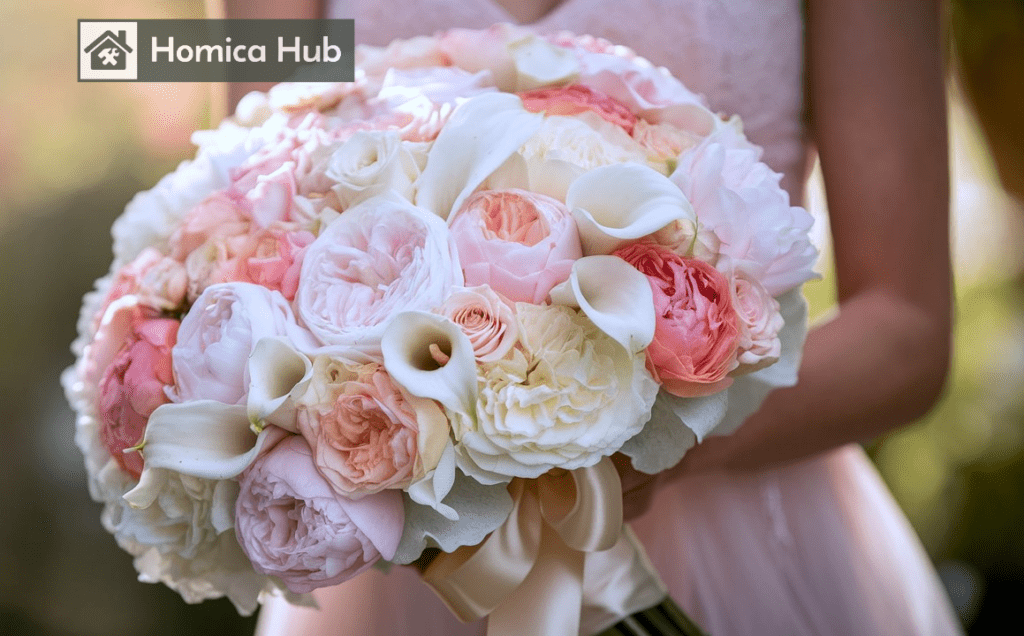
If you select larger flowers like roses, peonies, or calla lilies, fewer blooms are needed to create a full and lush bouquet. For example, a bouquet made with large peonies may only require around 15 to 20 blooms to achieve a beautiful, elegant look. These flowers take up more space and naturally provide a fuller look with fewer individual blooms.
b) Small Flowers

Smaller flowers such as baby’s breath, daisies, or lavender tend to take up less space, which means you’ll need more blooms to achieve a similarly full appearance. For example, if you are using baby’s breath as a filler flower, you may need 30 to 40 stems to achieve the desired fullness in your bouquet.
c) Mixed Flowers
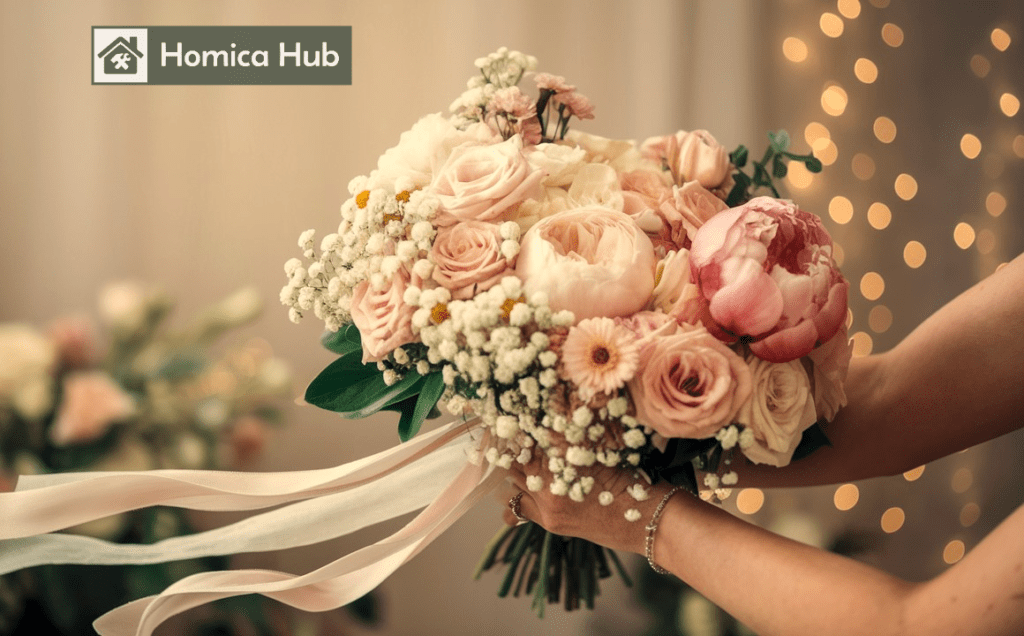
If you combine both large and small flowers, the total flower count may vary depending on how you balance the different sizes. You could mix peonies with daisies, or roses with baby’s breath, to create a harmonious and balanced bouquet. In this case, you might end up with 25 to 40 flowers, depending on the flower sizes and arrangement.
2. Size Of Wedding Bouquets
The size of your bouquet plays a crucial role in determining how many flowers are needed. Naturally, a larger bouquet requires more flowers, while a smaller bouquet will need fewer blooms.
a) Large Bouquets
A larger wedding bouquet, such as a cascading bouquet, will need many more flowers to fill the space and maintain the dramatic effect. The variety of flowers in these bouquets usually includes larger blooms at the top, transitioning to smaller flowers and greenery at the bottom to achieve the cascade. Cascading bouquets are often used for a grander look, where the flowers flow downward, creating a waterfall-like effect. These bouquets may require 30 to 50 flowers, depending on the desired size and the choice of flowers.
b) Small Bouquets
A smaller bouquet such as a nosegay or hand-tied bouquet may require only 20 to 25 flowers. These smaller bouquets are compact and usually feature a more natural or minimalist design. A nosegay, for example, is a tightly arranged, smaller bouquet often used for vintage or intimate weddings, typically composed of 15 to 20 flowers.
3. Style Of Wedding Bouquets
The style of your wedding bouquet can really shape the look of your whole arrangement. Whether you go for a classic round bouquet, a flowing cascading style, or a more relaxed hand-tied design, each style adds its own charm and fits different wedding vibes.
a) Round Bouquets

The round bouquet is usually arranged in a circular pattern. Round bouquets typically contain about 20 to 25 flowers, depending on the type and size of the flowers used. This style is classic and timeless, making it perfect for traditional weddings. The tight arrangement gives a clean, polished look without being overly large.
b) Cascading Bouquets
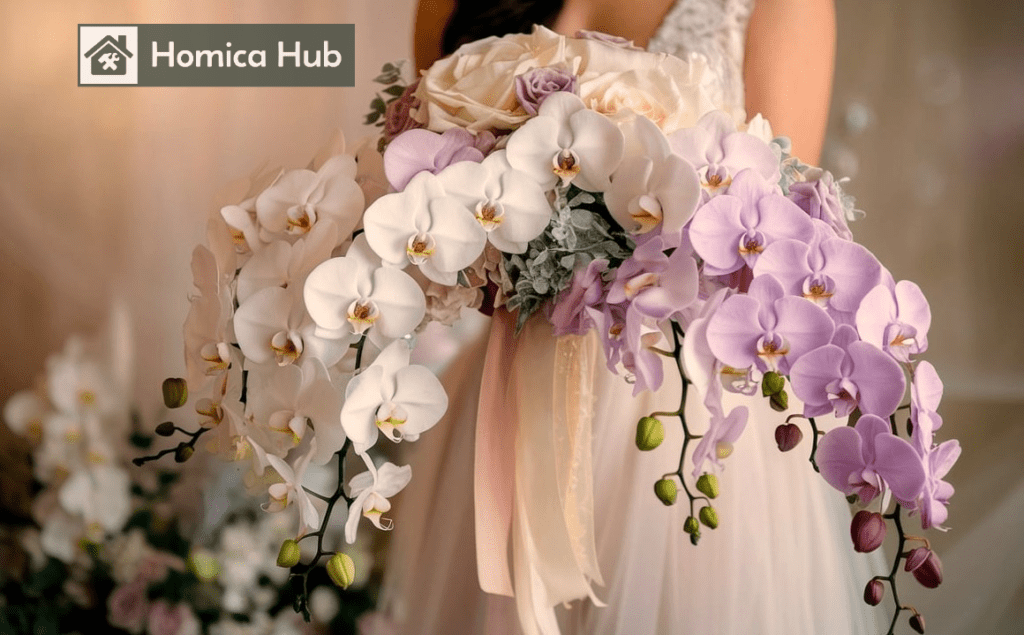
A cascading bouquet might be your ideal choice if you envision a dramatic wedding look. This style features flowers that spill downward in a waterfall-like fashion. Because cascading bouquets require more volume to achieve their effect, they generally require more flowers—anywhere between 30 to 50. The blooms in a cascading bouquet are often a mix of larger flowers at the top, with smaller flowers and delicate greenery incorporated into the lower portion of the arrangement to create the cascading effect.
c) Hand-Tied Bouquets
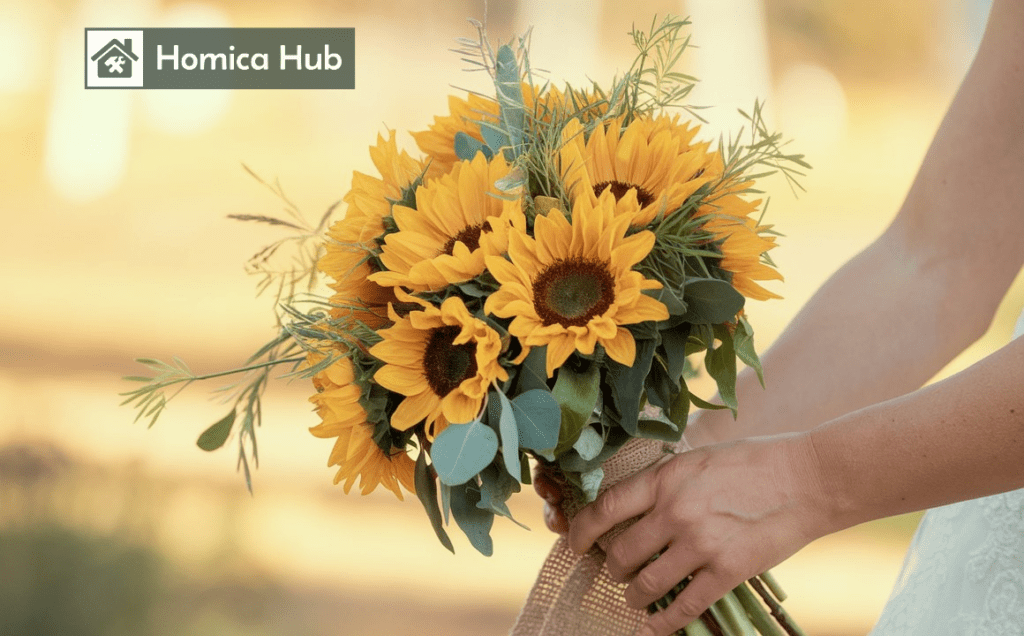
The hand-tied bouquet is a popular option for a more organic and rustic wedding. This style involves gathering the flowers by their stems and tying them together with a ribbon or twine. The hand-tied bouquet is typically made up of 20 to 30 flowers and has a casual, free-flowing look. This style works well with various flower types, including a mix of large focal flowers and smaller filler blooms.
d) Nosegay Bouquets

A nosegay is a small, tightly arranged bouquet often used in vintage or formal weddings. It typically contains about 15 to 20 flowers and is perfect for brides looking for a subtle, classic look. The nosegay bouquet is compact neat, and often includes a single type of flower or a combination of small, delicate flowers.
4. Wedding Theme & Bouquet Style
The overall theme and setting of your wedding can also influence the number of flowers in your bouquet. Whether you’re having a rustic, bohemian, or modern wedding, you will dictate how many flowers you need to create a bouquet that complements the vibe.
a) Rustic Weddings
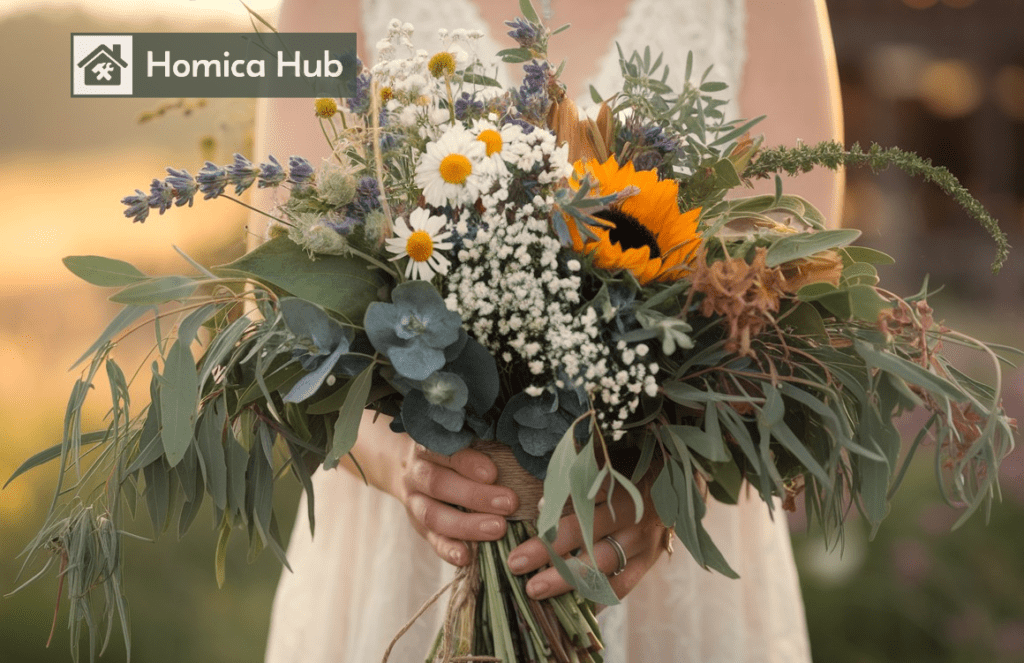
If you’re planning a rustic wedding, you may opt for a bouquet that features wildflowers or a mix of greenery and blooms. These bouquets often require 30 to 40 flowers to create a whimsical look. Wildflower bouquets tend to have more texture and a more natural, untamed appearance, which can result in a slightly higher flower count.
b) Minimalist Weddings
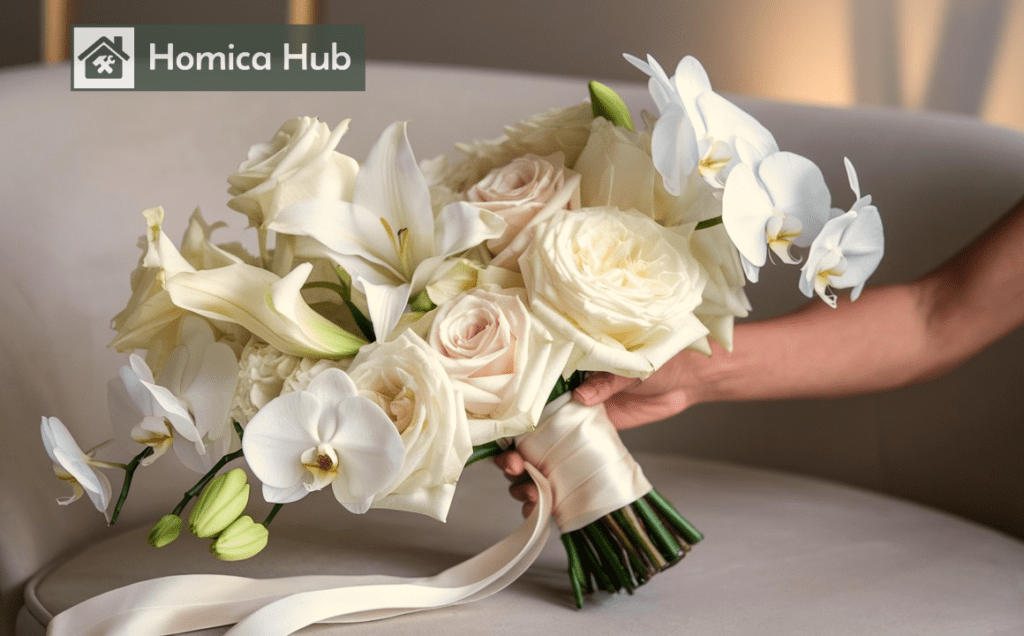
The bouquet might have fewer flowers for modern or minimalist weddings. A bouquet with just 15 to 20 flowers can look sleek, sophisticated, and understated. When selecting flowers for a minimalist bouquet, larger blooms like white roses or lilies may be chosen, and the bouquet may feature fewer stems but more attention to design.
Related Post
Calculating How Many Flowers You Need For a DIY Wedding
Video Tutorial
FAQs
How many flowers do I need for a bridal bouquet?
The number of flowers in a bridal bouquet depends on the size and style of the arrangement. A small bouquet may have 10–20 stems, while a medium bouquet typically has 20–30 stems. A large, dramatic bouquet can include 30–50 flowers or more.
How many flowers are there in a bouquet?
The number of flowers in a bouquet varies based on its purpose and design. A standard bouquet can have anywhere from 5 to 50 flowers, depending on the type of flowers used, the arrangement style, and the desired fullness.
How many types of flowers are in a bridal bouquet?
A bridal bouquet usually contains 2 to 5 different types of flowers. Common choices include roses, peonies, lilies, orchids, and hydrangeas, often complemented by greenery and filler flowers for texture and balance.
How many pieces are in a bouquet?
A bouquet consists of multiple flower stems, usually combined with filler flowers and greenery. The total number of pieces depends on the bouquet’s size, typically ranging from 10 to 50 stems, including both flowers and decorative elements.



